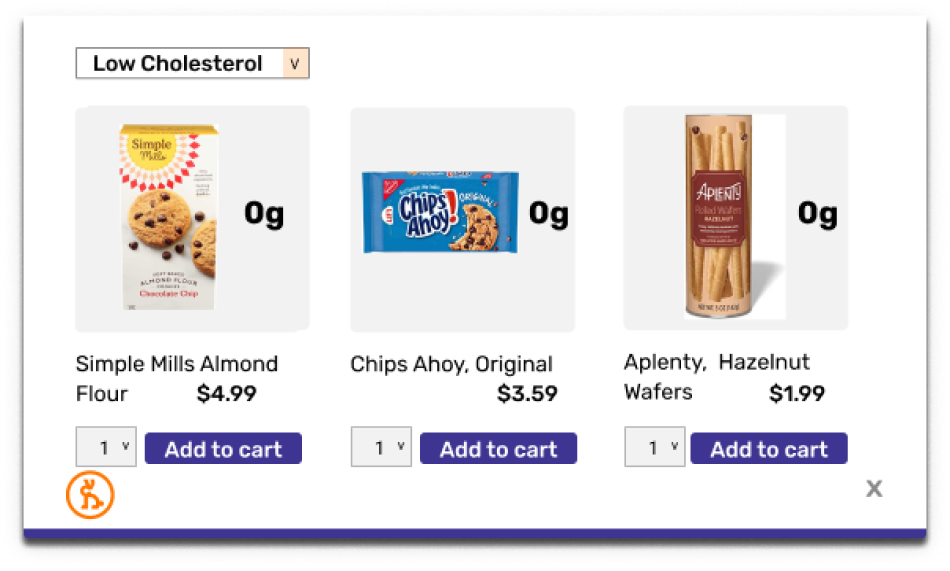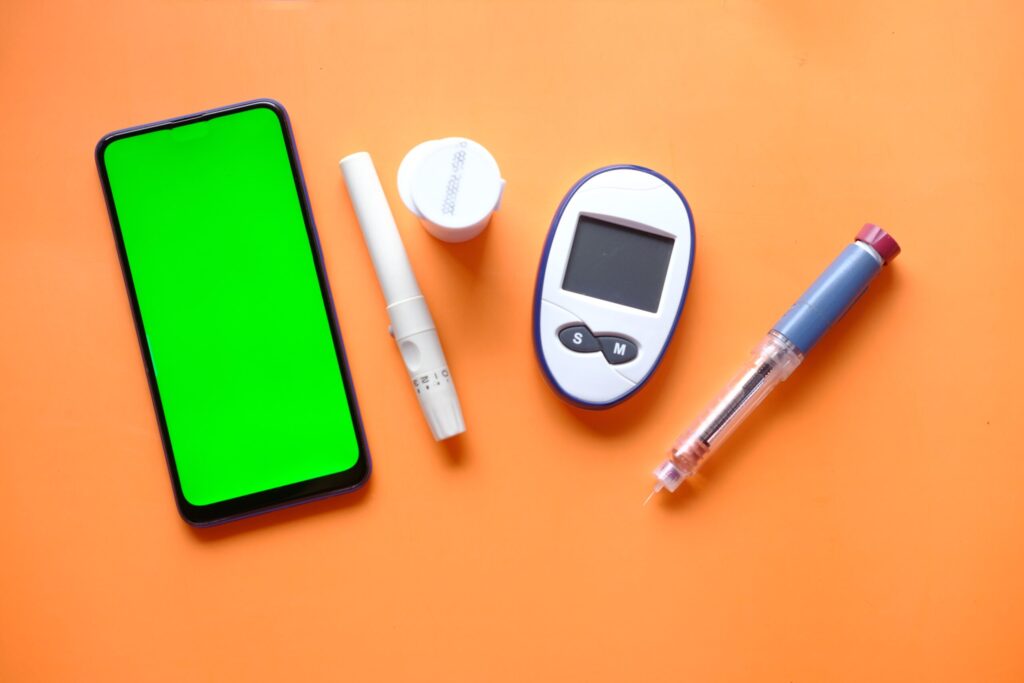Does it seem like everywhere you turn you hear the word “diabetes?” It’s mentioned frequently in doctors’ offices, on social media, and even in our day-to-day conversations. But, what exactly is diabetes? Can you catch it? What does someone with diabetes eat or avoid? If you’ve ever asked yourself any of these questions, keep reading. This article is chock-full of answers.
What is Diabetes?
Diabetes is a chronic condition that can impact anyone. It affects how the body converts certain foods, known as carbohydrates, into energy. Before we jump into what a carbohydrate is and how to help manage diabetes through diet, we must first understand that there isn’t just one standard of diabetes. According to the Center of Disease Control and Prevention (CDC), there are several types of diabetes. Let’s take a look:
Type 1 Diabetes is an autoimmune condition that usually occurs during childhood and in young adults. It is characterized by the destruction of beta cells in the pancreas. The body recognizes the beta cells as invaders and begins an outright attack. This is unfortunate because beta cells are responsible for making insulin, which helps to lower blood sugar levels. For this reason, the main treatment plan for someone who has this type of diabetes has to include insulin.
Latent Autoimmune Diabetes in Adults, simply known as LADA or type 1.5 diabetes, is a slow-progressing form of autoimmune diabetes. Like type 1 diabetes, the beta cells of the pancreas are destroyed. LADA is different from type 1 diabetes because you often won’t need insulin anywhere from several months to years after being diagnosed. For this reason, diet management is a big part of the treatment plan.
Type 2 Diabetes is a condition in which your body does not use its own insulin supply well. The majority of people who have diabetes have this type of diabetes. There are certain risk factors that can put you at risk for developing type 2 diabetes. Risk factors we can’t control include our age, race, and family history. But there are risk factors that we can control to decrease our risk of developing this type of diabetes. Weight status, physical activity, and diet each play important, modifiable roles in reducing risk.
Maturity Onset Diabetes of the Young (MODY) is a type of diabetes that is different from type 1 diabetes, LADA and type 2 diabetes. MODY is a result of a genetic mutation that is inherited from a parent. For example, if a parent has blue eyes, then this gene can and will be passed down genetically. The same is true for MODY. If a parent has this gene, then any child they have has a 50% probability of inheriting it. Why? Again, because parents pass on traits and genes, at large, to their children. So if this particular gene is passed down to the child, the child goes on to develop MODY.
Is Diabetes Dangerous?
Diabetes is not a dangerous condition; however, uncontrolled diabetes can be dangerous. Uncontrolled diabetes results in high blood sugar levels, and this can be detrimental to every single part of the body. For example, high blood sugar levels can damage the blood vessels in the eyes, heart, kidneys and nerves. Prolonged high blood sugar levels can result in vision loss, heart disease (the number one killer of men and women in the U.S.), kidney dysfunction (which may require dialysis), and neuropathy. Furthermore, some of the complications which arise from uncontrolled diabetes are irreversible, impacting morbidity and mortality. Here are where true dangers lie.
Signs and Symptoms of Diabetes:
Diabetes is a condition that impacts millions of people. As a matter of fact, some people may not even know they have diabetes to begin with. Common signs and symptoms of uncontrolled (high) blood sugar levels you should not ignore include:
- Frequent urination
- Fatigue
- Dry mouth
- Excessive thirst
- Unexplained weight loss
- Slow wound healing
- Blurry vision
- Tingling in the hands or feet
It is important to address these symptoms by contacting your healthcare provider—especially if you are at an increased risk for developing diabetes. If blood sugar levels are high for an extended period of time, this can lead to the damage of other internal organs of the body and may also diminish quality of life.
Does Diabetes Cause Headaches?
People who have diabetes may experience headaches. As a matter of fact, a headache may be an indication of a high or low blood sugar level. According to the Standard of Medical Care in Diabetes, a normal blood sugar reading should be between 70 to 180 mg/dL. Any number outside these parameters is not optimal. The presence of a headache might be your body giving you a warning—aside from the signs and symptoms—that things have gone off track.
Testing for Diabetes
There are a few tests your doctor or healthcare provider may use to determine if you have diabetes. Please note that only a doctor can properly determine a diabetes diagnosis. Let’s take a look:
The Hemoglobin (A1C) test is a blood test that shows your average blood sugar level for the past few months. It measures the percentage of blood sugar attached to hemoglobin. An A1C level of 6.5% or higher on two separate occasions is indicative of having diabetes. This test does not require you to fast.
A random blood sugar test is where a sample of your blood is taken at any given time. As the name implies, it’s totally random. If you have a blood sugar reading of 200 mg/dL or higher it is indicative of diabetes. This test, also, does not require you to fast.
A fasting blood sugar test is taken after you have fasted overnight. A fasting blood sugar reading of 126 mg/dL or higher on two separate tests is indicative of having diabetes. But again, only a doctor or healthcare provider can actually diagnose you.
An oral glucose tolerance test measures your body’s response to a sugar challenge. This test can be used to help diagnose type 2 diabetes. During this test, you are not required to fast. Your initial blood is drawn and then you’ll be given a sugary beverage. Then your blood is drawn after 1 hour, 2 hours, and then, 3 hours. Abnormal readings are as follows:
- Fasting, 95 mg/dl or higher
- One hour, 180 mg/dl or higher
- Two hours, 155 mg/dl or higher
- Three hours,140 mg/dl or higher
While the aforementioned tests work well to determine if you have diabetes, there are also more specialized tests that can determine which type of diabetes you have. For instance:
The C-Peptide Test is a blood test that is performed to see what your pancreas is doing. C-peptide is a sign that your body is producing insulin. A low level (or no C-peptide) indicates that your pancreas is producing little or no insulin. This test can be used in type 1 diabetes and also LADA.
MODY can and has been mistaken for type 1 or 2 diabetes. While certain criteria have to be met, further testing for MODY consists of a genetic blood test.
Antibody testing is a blood test that checks to see if antibodies are present against the pancreas. This type of testing helps to determine if LADA is present.
What Should My Blood Sugar Levels Be?
Your doctor has the final say related to what your blood sugar levels should be. You may have a tighter or looser blood sugar level recommendation depending on your age, goals, and/or activity level. As a general rule of thumb, the National Institute of Health recommends a reading of 80 to 130 mg/dL right before you eat and a reading of 180 mg/dL or below 2-hours after the start of a meal (1).
What is a Carbohydrate, and Is It Bad For Me?
A carbohydrate is a major nutrient. It provides the body with a source of energy. Foods that contain carbohydrates include:
- Fresh and dried fruits
- Dairy products, such as milk and yogurt
- Dried beans & legumes
- Starchy vegetables, such as corn and potatoes
- Whole & refined grains such as, breads, rice, pasta, cereals and crackers
- Nuts and seeds
These foods are also loaded with vitamins and minerals so the cells in our bodies can do their job and do it properly. While it is a fact that foods containing carbohydrates can raise blood sugar levels, these foods are not the enemy. For example, dairy products provide the body with calcium and phosphorus, which is needed for bone health; nuts and seeds are great sources of plant-protein; and whole grains contain fiber which can help with blood sugar management. On the flip side, snack foods, such as cakes, cookies, pies, and chips, can send your blood sugar numbers soaring. Other than containing added sugar that can spike your blood sugar reading, these foods are notorious for being void of fiber.
Snacks for Diabetes Management:
Contrary to popular opinion, there is no such thing as a “diabetes diet.” Why? Because a variety of foods (including snacks) can be consumed by anyone that has diabetes. As a general rule of thumb, it is always ideal to include a snack that contains a fiber-rich carb, a fat, and a protein. These nutrients work together to help keep blood sugar levels stable. Nutrient and fiber-rich carbohydrates, such as whole-grain carbohydrates, provide the body with vitamins, minerals, and energy. The fiber they contain helps to slow down blood sugar spikes and keep you full for a longer period of time. On the other hand, simple carbs—found in candy, processed sweets and sodas—are not as nutritious and are void of fiber. These can raise blood sugar levels more quickly.
Some great choices for carbohydrates that contain fiber are crackers and whole fruit. To that carb, add fat—which, actually, is not bad for the body. As a matter of fact, your body needs a certain amount of fat for hormone production. Furthermore, fats do not directly raise blood sugar levels. But too much fat in the diet isn’t ideal. Obtaining fat from olives, avocado, nuts and seeds, and low-fat cheese, instead of fried and greasy foods (ex: chips), is ideal. Finally, there’s protein. Protein has gained a lot of media attention and rightly so. It is needed for our muscles and bones. Getting protein from either animal or plant sources is ideal. For example, if you’re vegetarian, you can get protein from dairy products, nuts, seeds and their corresponding butters. If you eat meat, you can get protein from fish, chicken, or lean beef, for example.
Some examples of sound snack ideas that include a carbohydrate, a fat and a protein are:
- String cheese and apple slices
- Mashed avocado on whole wheat crackers with hemp seeds
- Whole grain toast and peanut butter
- Yogurt and berries
- Turkey and cheese wrap with sliced cucumbers
- Hard-boiled egg with grapes
The Bottom Line:
There are different types of diabetes. Food and nutrition play an important role in the proper care and management of them all. After speaking with your healthcare provider, do a little more digging regarding what your specific type of diabetes entails. Finally, remember to nourish yourself properly. Not only will you feel better, but you will begin to notice that diabetes is completely manageable.

People ask Vitalcart for grocery tips each day. We get the best finds for each health goal and share them live with you.

The shopping assistant that makes nutrition planning easy.
References:
- https://www.niddk.nih.gov/health-information/diabetes/overview/managing-diabetes/know-blood-sugar-numbers#why

